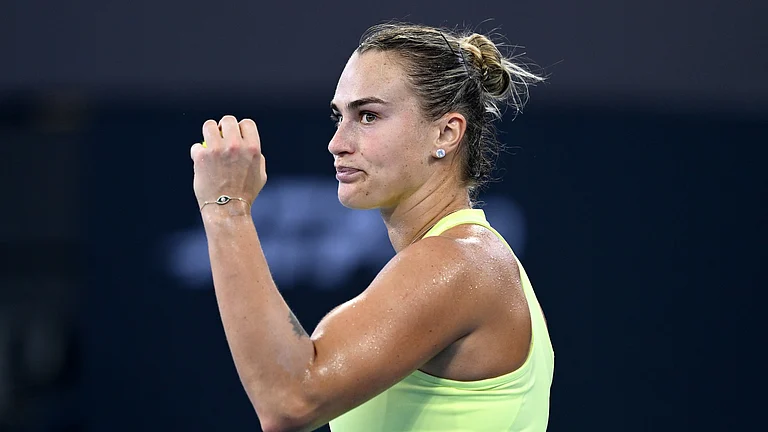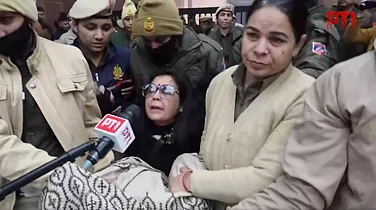Chhattisgarh Chief Minister Bhupesh Baghel was among the leaders who were present when Rahul Gandhi recently launched his Bharat Jodo Yatra from Kanyakumari. The five month-long march is an ambitious programme of the Congress to revive itself. Baghel spoke to
Outlook’s Ashutosh Bhardwaj about the yatra, the party’s plans and his famous Godhan Nyay Yojana. Edited excerpts.
What’s the yatra’s purpose?
The Congress is serious about the situation in the country. The Union government is suppressing various voices, curbing the media, setting the narrative on its terms, using various agencies to defame and harass the Opposition, and pressuring constitutional bodies. There is no debate on burning topics. So, we decided to organise the Bharat Jodo Yatra to bring together the common people under one umbrella.
Many communities and religions have lived in India with harmony, but the BJP has brought in a politics of polarisation. Unity in diversity has always been our strength. Very few countries can boast of such diversity. This country has constantly given the message of brotherhood to the world. But today, we are moving towards hatred and violence. The BJP is trying to destroy this diversity, this nation.
But why the yatra? Congress could’ve worked on building its organisational strength.
Our country has had a rich tradition of padyatras. Many saints, sages and leaders have embarked on padyatras to bring society together, ensure social harmony and to understand the social, cultural and economic changes across the country.
Jagadguru Shankaracharya began from Kerala and established mathas at four corners of the country. He united India in a cultural thread. Guru Nanak undertook a long yatra, went to Mecca and also visited Chhattisgarh. Yatras have long roots in our culture. Consider our avatars. Krishna undertook a long yatra from the east (Mathura) to the west (Dwarka), Rama went from the north to the south. The tradition of padyatra starts with Shankaracharya, Guru Nanak and continues with Swami Vivekananda, Mahatma Gandhi and Vinoba Bhave. Padyatras are not shakti pradarshan (shows of strength). You bring people together with yatras.
Why ignore Gujarat and Himachal, which will have elections soon? States like Bihar are totally left out, or barely touched, like UP.
We decided to begin from Kanyakumari. Our culture lends a great significance to sangam, be it Prayagraj in UP or Rajim in Chhattisgarh. Kanyakumari is a sangam of three oceans.
The impact of a padyatra is not limited to its designated route. It spreads far beyond its path. When Gandhiji did the 250-km padyatra from Sabarmati to break the Salt Law, did it impact only that small stretch of Gujarat, or the entire country and beyond? It’s only been a few days of Bharat Jodo, but see how nervous the BJP has already become.
Possible outcome of the yatra?
A lot would change in Indian politics by the time the yatra is over. The people’s mood would have changed. Even those who had been writing against Rahul Gandhi are now appreciating his hard work, struggle and simplicity. It will create public opinion on crucial issues like inflation, agrarian crisis and unemployment.
I was in the yatra for the first two days. We went to Vivekananda Smarak, Kamraj Mandapam, Gandhi Mandapam. Next day, we walked over 12 km in the first half, and didn’t take a single halt. The padyatra will give us strength to fight for the people’s causes.
It seems the purpose of the yatra is to revive Rahul Gandhi’s career and build his image.
Rahul Gandhi could have become a minister, even the PM, in the UPA government. But he decided against it. He is working hard today. Why is he struggling? Is he struggling to be the PM? No. He is struggling for the people, to prevent the country’s polarisation, to raise pressing issues of unemployment and inflation. There is no discussion on inflation in Parliament or on any TV channel. There’s an attempt to suppress people’s issues. We are trying to raise these issues.
Coming to Chhattisgarh, what’s the need to buy cow dung and urine from farmers, instead of introducing modern technology to help them?
Stray cattle had become a major issue in the state. Nobody wanted to keep ageing cattle. There were no buyers as well. People left them unattended. I was surprised to notice the change, because cattle had once been our strength. Whenever one needed quick money, they would sell a cow or an ox. There’s another social change. Since more farmers have tractors now, oxen have become redundant.
To resolve the issue, we thought of purchasing cow dung and reviving traditional gothans—‘day-care centres’ for cattle. We came up with a slogan: Chhattisgarh ke char chinhari; Narva, garva, ghurva, bari (The four markers of Chhattisgarh are: Small streams, cattle, organic manure pit, and vegetable gardens). We soon transformed cow dung and gothan schemes into a comprehensive programme for rural upliftment. Gothans have now evolved from being mere cattle centres into small units that support women’s self-help groups, who undertake activities like poultry farming, fisheries and vegetable growing. Economic activities that began with the purchase of cow dung, have now converted gothans into rural industrial parks.
Questions are being asked about the budget of the Godhan Nyay Yojana. There are also objections that you used MNREGA funds to build gothans.
We have spent very little amount on the scheme. We funded gothans largely through convergence with various departments, like panchayat, horticulture and animal husbandry. We used some MNREGA funds for some construction work, but what’s wrong with that?
Of the 10,624 gothans we’ve approved across the state, 8,408 have already been built. We’ve bought 80.4 lakh quintals of cow dung, worth Rs 160.94 crore, since the launch of the scheme till August 31. It has benefitted 2,52,685 cattle-rearers. Of these, 40 per cent are STs, 8 per cent SCs and 49 per cent OBCs. It’s clearly benefitted the state’s neediest people.
But what is more important is that 3,089 gothans have already become independent by selling various products, including compost made from cow dung. So far, we have sold compost worth Rs 175 crore. As of now, 11,187 self-help groups (SHGs) are operational with 83,874 members. Each gothan employs 20-30 women. After the success of the cow dung scheme, we started buying cow urine that SHGs are using to produce insecticides and pesticides.
Cow-dung compost will decrease our dependence on fertilisers and usher in organic farming. We are also planning to buy carbon credits. The Godhan Nyay Yojana has received praise from former RBI governor Raghuram Rajan, even from Prime Minister Narendra Modi. I may or may not remain the chief minister of the state, but I want to leave behind a model to make every village self-sustaining.
(This appeared in the print edition as "‘India Has a Rich Tradition of Padyatras’")


























